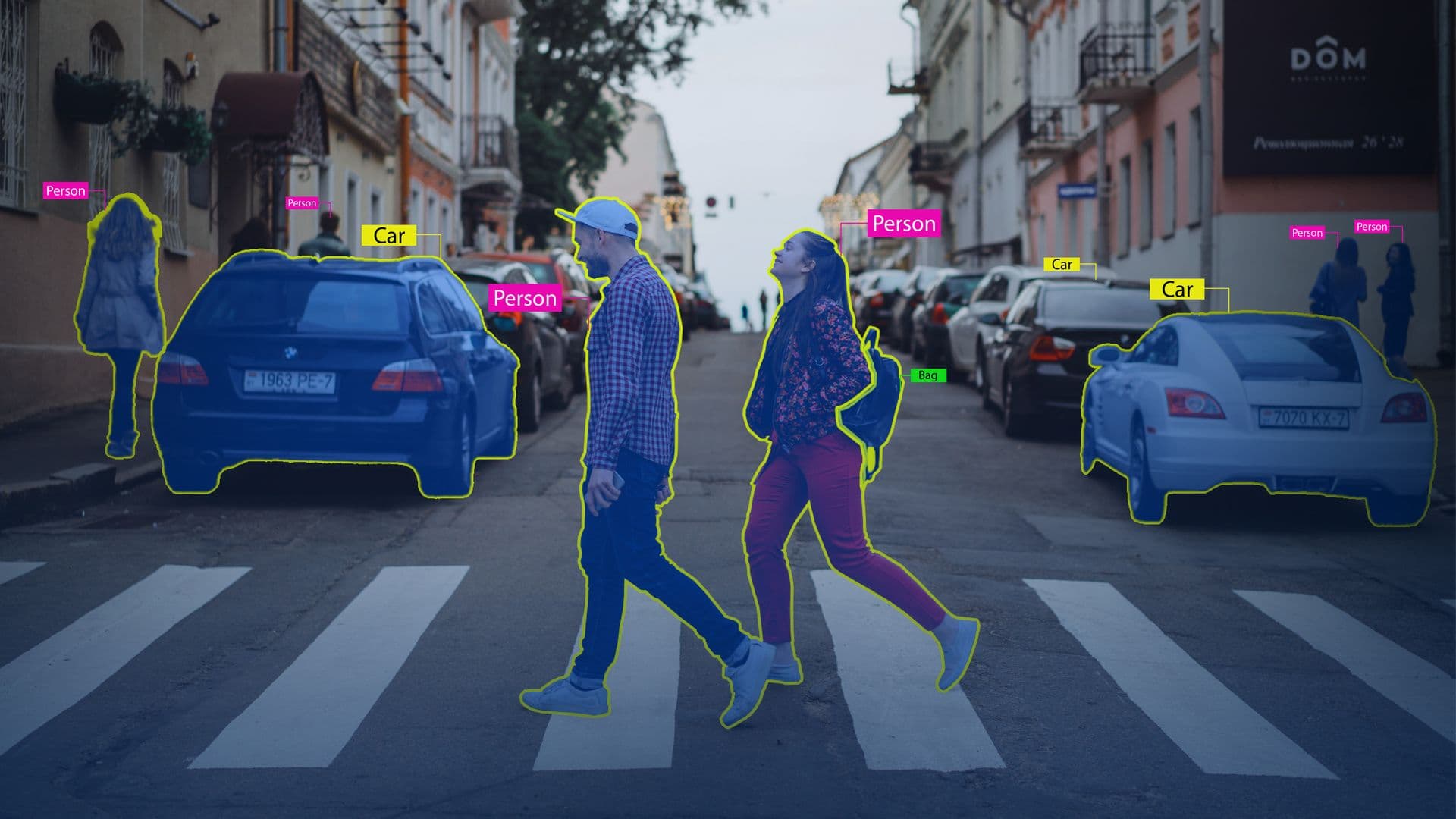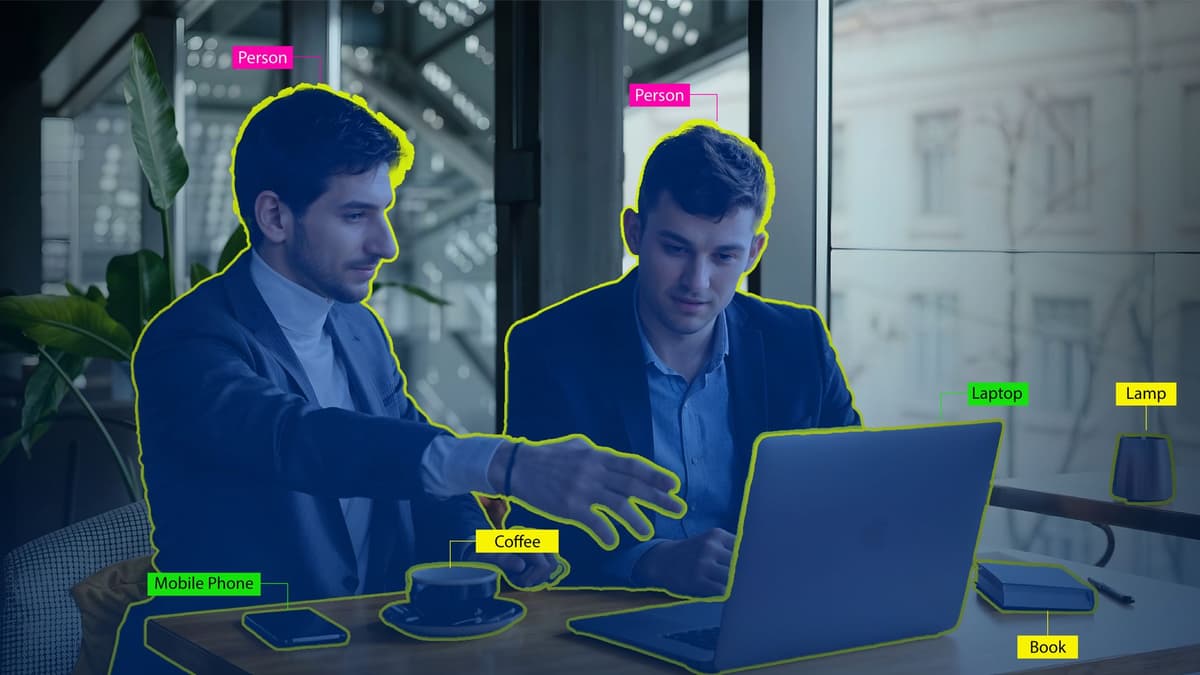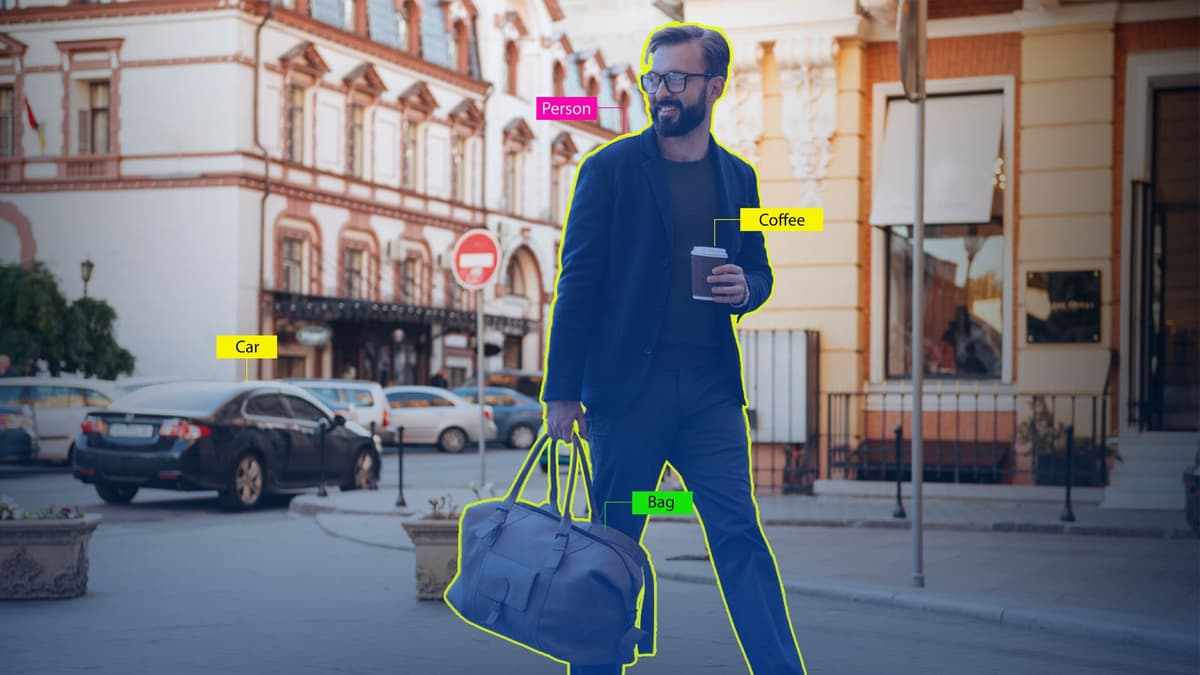How to Configure Labeling Interface in Labelo

Configuring the labeling interface in Labelo is a crucial step to ensure that annotators have the right tools and configurations to perform their tasks effectively. This process involves browsing templates, adding labels, and customizing the interface to fit the specific requirements of your project.
Set up the labeling interface for your project
Browse Templates
Labelo provides a library of preconfigured templates that cater to various annotation tasks, such as object detection, image segmentation, and text classification. To access these templates, navigate to the labeling interface within the project settings, as shown in the image below.

There, you will see the ‘Labeling interface’ settings. When we choose it, the window below will appear where you can set up the labeling interface for the particular project.

By clicking on the Browse Template button, you will be navigated to templates and select one that closely matches your project’s requirements.

Depending on your annotation task, choose the appropriate tools. Also, We can preview the selected template to understand its structure and functionality.
Computer Vision

This template is designed for tasks where you need to identify and label objects within images. It typically includes tools for drawing bounding boxes around objects and assigning labels to these boxes. This is ideal for projects like autonomous driving, where identifying vehicles, pedestrians, and traffic signs is crucial.
- Bounding boxes:- Best for locating and labeling objects in a simple, rectangular shape.
- Polygons:- Ideal for outlining irregularly shaped objects with high precision.
- Masks:- Used for pixel-level segmentation, classifying every part of an image.
- Keypoint Labeling:- For marking specific points on objects, useful in pose estimation.
- Image Captioning:- Generating descriptive text based on the entire image content.
- Visual Question Answering:- Visual Question Answering (VQA) is a task where a system answers questions about the content of an image. The system takes an image and a natural language question as inputs and generates a relevant answer.
- Image Classification:- Image classification involves assigning a label or category to an entire image. A model is trained to recognize and classify the dominant object or scene within an image.
- Optical Character Recognition (OCR):- Optical Character Recognition (OCR) is the process of detecting and converting text within images into machine-readable text. OCR technology can recognize printed or handwritten text from scanned documents, photos, or even videos.
Natural Language Processing

Designed to categorize text documents or segments into predefined categories. Annotators can highlight sections of text and assign labels, making it useful for sentiment analysis, topic categorization, or spam detection.
Text Classification:- Text classification is the process of assigning a category or label to a piece of text based on its content. This can be done using machine learning models that have been trained on labeled datasets.
Named Entity Recognition:- Named Entity Recognition (NER) is the process of identifying and classifying entities mentioned in a text into predefined categories, such as the names of people, organizations, locations, dates, etc.
Text Summarization:- Text summarization is the process of condensing a long piece of text into a shorter version while retaining the essential information and meaning.
Question Answering:- Question Answering (QA) is the task of building systems that automatically answer questions posed by humans in natural language. These systems can either extract answers from a given text (closed-domain) or generate answers based on a broader understanding of a topic (open-domain).
Taxonomy:- Taxonomy refers to a hierarchical classification system that organizes concepts or items into categories and subcategories based on their relationships. In data science and NLP, a taxonomy is used to classify and organize information in a structured manner.
Relation Extraction:- Relation Extraction is the task of identifying and classifying relationships between entities in a text. This process involves detecting pairs of entities and the type of relationship that exists between them.
Audio/Speech Processing

Audio and speech recognition is a critical component of many modern applications, from virtual assistants to transcription services and beyond. Labelo supports a comprehensive annotation tool for audio and speech recognition tasks, enabling users to create high-quality labeled datasets for training machine learning models.
Speech Transcription:- Speech transcription is the process of converting spoken language into written text. This can involve transcribing live speech, recorded audio, or video content into a textual format.
Conversational Analysis:- Conversational analysis involves studying and understanding the structure and patterns of conversations. This can include analyzing turn-taking, topic shifts, sentiment, intent, and the overall flow of dialogue between participants.
Automatic Speech Recognition:- Automatic Speech Recognition (ASR) is the technology that enables machines to understand and process human speech by converting it into text. ASR systems use algorithms and models, often based on neural networks, to recognize spoken words and phrases.
Speaker Segmentation:- Speaker segmentation is the process of dividing an audio recording into segments based on who is speaking. The goal is to identify and label portions of the audio that correspond to different speakers.
Sound Event Detection:- Sound Event Detection (SED) involves identifying and labeling specific sound events within an audio recording. These events could be anything from a doorbell ringing to a dog barking, independent of spoken language.
Conversational AI

Integrating Conversational AI into Labelo enhances the user experience by providing intelligent, real-time assistance, streamlining the labeling process, and improving overall efficiency.
Conversational AI can analyze the context of the data being labeled and suggest relevant labels to the annotators. This can significantly speed up the labeling process and improve consistency across the dataset.
Response Selection:- Response selection in Conversational AI refers to the process of choosing the most appropriate response from a predefined set of possible responses based on the user’s input. Instead of generating a new response from scratch, the AI system selects the best match from existing responses that are already crafted or learned from previous interactions.
Response Generation:- Response generation involves the AI system creating a new, original response in real-time, based on the user’s input and context. Unlike response selection, which relies on predefined answers, response generation uses models like neural networks to produce unique responses tailored to the specific situation.
Coreference Resolution & Entity Linking:- Coreference resolution is the task of identifying when different expressions in a text refer to the same entity. Entity linking is the process of connecting mentions of entities in text to their corresponding entries in a knowledge base, such as Wikipedia.
Intent Classification & Slot Filling:- Intent classification is the process of determining the underlying purpose or goal of a user’s query or command. Slot filling involves extracting specific pieces of information (slots) from a user’s input that are necessary to fulfill an intent.
Ranking & Scoring

Ranking and scoring are essential components in data labeling projects, helping to prioritize tasks, evaluate annotations, and ensure high-quality datasets. By implementing these systems, Labelo ensures that labeling tasks are prioritized effectively, annotator performance is accurately evaluated, and the overall quality of the dataset is maintained at a high standard.
It includes.
pairwise regression:- Pairwise regression is a type of regression analysis where the model considers pairs of data points to learn the relationship between features and target variables. Instead of predicting a value directly, it predicts the difference between two paired data points.
Search Page Ranking:- Search page ranking involves ordering search results on a search engine results page (SERP) based on relevance to a user’s query. Algorithms typically consider factors like keyword match, page quality, user engagement, and backlinks.
Content-based image retrieval:- CBIR is a technique used to search and retrieve images from a large database based on the content within the images themselves, such as color, texture, shape, or any other visual features, rather than relying on metadata or keywords.
Pairwise Classification:- Pairwise classification involves classifying pairs of items or data points to determine the relationship between them, such as whether one item is preferred over another or belongs to the same category.
Document Retrieval:- Document retrieval is the process of finding and retrieving relevant documents from a large database in response to a user’s query. The goal is to find documents that best match the search criteria, typically using algorithms that consider factors like keyword matching, relevance, and document quality.
Structured Data Parsing

Structured data parsing involves extracting, interpreting, and organizing data that is formatted in a consistent and predefined way, such as tables, spreadsheets, or JSON files. In the context of Labelo, structured data parsing is crucial for efficiently importing, labeling, and managing data in a manner that ensures accuracy and consistency.
Structured data parsing allows Labelo to automatically read and interpret data from various structured formats. This automation speeds up the data import process, enabling users to quickly start labeling without manual data entry.
Tabular data:- Tabular data refers to data that is organized into rows and columns, similar to a spreadsheet or a database table. Each row typically represents a single record or data point, and each column represents a different feature or attribute of the data. This format is commonly used in structured data analysis.
PDF Classification:- PDF classification involves categorizing PDF documents into predefined categories based on their content, structure, or metadata. This process typically uses machine learning or rule-based approaches to analyze the text, images, and layout within a PDF.
Freeform Metadata:- Freeform metadata refers to descriptive information about data that is not restricted to a predefined format or structure. Unlike structured metadata, which follows specific schemas, freeform metadata can include any kind of descriptive information that users or systems choose to associate with a data object.
HTML Entity Recognition:- HTML entity recognition refers to the process of identifying and interpreting HTML entities in text.
Time Series Analysis

Time series analysis involves examining data points collected or recorded at specific time intervals to identify patterns, trends, and potential insights. In the context of Labelo, time series analysis is essential for labeling and analyzing temporal data, such as stock prices, sensor readings, or any other sequential data.
Time Series Forecasting:- Time series forecasting involves predicting future values based on previously observed values in a sequential time-ordered dataset. This technique is used to analyze and forecast trends, cycles, and seasonal variations in data collected over time.
Activity Recognition:- Activity recognition involves identifying and classifying activities or actions performed by individuals based on data collected from sensors or other input sources. This often involves analyzing patterns in time-series data from wearable devices, mobile phones, or other sensors.
Signal Quality:- Signal quality assessment involves evaluating the accuracy, clarity, and reliability of a signal, typically in contexts like audio, communication, or sensor data. It involves detecting issues such as noise, distortion, or interference that can affect the quality of the signal.
Outliers & Anomaly Detection:- Outliers and anomaly detection involves identifying data points that significantly differ from the majority of data in a dataset. These anomalies can indicate rare events, errors, or significant deviations from expected patterns.
Change Point Detection:- Change point detection is the process of identifying points in a time series data where the statistical properties or underlying distribution change significantly. These change points can indicate shifts in trends, patterns, or regimes within the data.
Videos

In Labelo, video data handling involves processes such as importing, annotating, reviewing, and exporting video clips for various applications. These applications can range from object detection and activity recognition to more specialized tasks like facial recognition or sports analysis. With powerful tools such as the video annotation tool and features tailored for video data, Labelo ensures that users can efficiently and accurately annotate videos for a wide range of applications, enhancing data quality and supporting the development of advanced AI models.
Video Classification:- Video classification is the process of assigning a label or category to an entire video based on its content. This involves analyzing the video’s frames to identify patterns, objects, activities, or scenes that correspond to predefined categories.
Video Object Tracking:- Video object tracking involves following and identifying the movement of specific objects across consecutive frames in a video. This process includes detecting objects in each frame and maintaining their identities as they move through the video.
Video Timeline Segmentation: Video timeline segmentation refers to dividing a video into meaningful segments or chunks based on content changes or events. This involves identifying points in the timeline where significant transitions occur, such as scene changes, actions, or topics.
Generative AI

Generative AI involves the use of algorithms to create new content based on existing data. In the context of Labelo, generative AI can significantly enhance the labeling process by providing automated annotations, generating synthetic data, and assisting with data augmentation.
Supervised Language Model Fine-tuning:- Supervised language model fine-tuning involves adapting a pre-trained language model to a specific task or domain by training it on a labeled dataset. This process adjusts the model’s weights based on supervised learning, where the model learns from examples with known input-output pairs.
LLM Ranker:- An LLM (Large Language Model) ranker is a model designed to rank or score a set of candidate responses or documents based on their relevance or quality. The ranker uses a large language model to evaluate and order these candidates according to how well they meet certain criteria or answer a query.
Visual Ranker:- A visual ranker is used to rank images or visual content based on their relevance or quality relative to a query or set of criteria. This involves evaluating and scoring images using visual features or models trained on visual data.
Human Preference Collection for RLHF:- Human preference collection for Reinforcement Learning from Human Feedback (RLHF) involves gathering data on human preferences or judgments to guide the training of reinforcement learning models. This data helps shape the model’s behavior to align with human values and preferences.
Chatbot Model Assessment:- Chatbot model assessment involves evaluating the performance of a chatbot or conversational AI model based on various metrics and criteria.
Customize a Template
In Labelo, we have a feature ‘custom template’ through which we can create a customized template with the help of code. If you develop a custom configuration that could benefit other Labelo users, think about sharing it as a template.
A project’s labeling configuration in Labelo is an XML file comprising three types of tags unique to the platform.

Customizing a labeling template in Labelo using code allows users to tailor the annotation interface to their specific needs, providing flexibility and precision in how data is labeled. This can involve modifying existing templates or creating new ones from scratch, ensuring that the labeling tools and workflow match the unique requirements of the project.
Add Labels
Labels play a crucial role in ensuring data is annotated accurately, as they define the categories required for your annotation project. For example, in an object detection task, you would define labels like “Person,” “Car,” “Dog,” etc., to categorize the different objects present in your data.

To add new labels in Labelo:
- Open Label Configuration: Navigate to the section where you can configure your labels.
- Add Choices: Use the “Add Choices” feature to create new labels.
- Define Label Names: Input the names of the labels you need, such as “Person,” “Car,” or “Dog.”
- Save Configuration: Save your changes to update the labeling interface with the new labels.

By specifying these labels, you help annotators correctly identify and categorize the elements in your dataset, which is essential for the success of your annotation project.
In conclusion, configuring the labeling interface in Labelo is essential for optimizing the annotators’ workflow and ensuring accurate data labeling. By following the best practices for data labeling, such as carefully selecting templates, adding appropriate labels, and customizing the interface to align with project-specific needs, you create a streamlined and efficient environment that enhances the overall quality and consistency of the annotations.
Labelo Editorial Team
Nov 29, 2024
Related Post

Why Labelo is Perfect for Annotating Diverse Data Types

The Future of Data Annotation: Trends and Innovation

How to Improve Model Accuracy Through Quality Data Annotation in Labelo

How Labelo Simplifies Data Annotation for Machine Learning Projects in 2025
Related Posts

Top 4 Annotating Options to Improve the Annotation Process in Labelo [2025]
Labelo the open-source data labeling tool offers a variety of annotati...
How to Create a Project Template in Labelo
Creating a project template in Labelo saves you time and effort by let...
How to Improve Model Accuracy Through Quality Data Annotation in Labelo
In the rapidly evolving field of artificial intelligence and machine l...
Why Labelo is Perfect for Annotating Diverse Data Types
Working with diverse data types—like text, images, video, and audio—is...